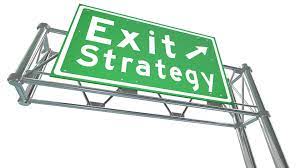Safety stock is a precaution against unanticipated circumstances. Basically, accurate safety stock calculations are critical for avoiding sales losses caused by stockouts or disruptions in the supply chain. But there is no one-size-fits-all formula for all organizations, so you’ll need to pick the best method for yours. As a result, in this article, we will provide the basic but important information you should know about safety stock.
What is a Safety Stock?
Safety stock is the extra goods you have on hand in case of an emergency or a breakdown in the supply chain that results in lower-than-normal inventory availability. Businesses typically try to forecast future sales and then manage inventory and expenditures per that forecast.
This would be a pretty straightforward process if sales were steady and lead times for orders were never an issue. However, not everything in business is predictable, and the retail supply chain may experience delays.
If your inventory prediction isn’t flawless, you can maintain safety stock to ensure you don’t run out of supplies. You can calculate how much safety stock you need using a straightforward method.
The Importance of Safety Stocks
Running out of stock is made easier by having safety stock. If you have enough safety stock, you won’t need to rely on your suppliers’ prompt deliveries or turn away clients because of low stock levels. You are covered by safety stock until your next shipment of ordered stock arrives. Let’s examine the value of safety stock for your company:
#1. Safeguards Against Demand Peaks
Your safety stock shields you from sudden demand spikes and incorrect market predictions that can occur during a busy or festive season. It acts as a buffer when the ordered items arrive at your warehouse later than anticipated. It ensures your business doesn’t run out of in-demand products and enables you to fulfill requests constantly.
#2. Stock Up to Prepare for Lengthier Lead Times
Even if your supplier consistently makes on-time deliveries and you have never experienced a supply lag, this might not always be true. Your products may get to you later than anticipated due to unanticipated production or shipment delays, such as a bottleneck at your supplier’s end or a delivery delay brought on by bad weather. In these circumstances, safety stock serves as your buffer against a potential stockout scenario and aids in order fulfillment while you wait for your requested stock to arrive.
#3. Mitigation of Price Fluctuations
The price of your goods may increase unexpectedly due to market changes. This could be brought on by a sudden shortage of raw resources, a rise in the price of raw materials, unanticipated market demand spikes, new rivals, or new government regulations. It can assist you in avoiding the expenditure of buying stock at higher prices without sacrificing sales if you have enough backup stock during these unforeseen events.
Why is Safety Stock Important in businesses?
Having too little inventory is a costly problem for companies worldwide. According to research by the IHL Group, stockouts cause $984 billion in missed sales globally, with North American businesses alone suffering a $144.9 billion loss. Businesses should keep safety stock on hand for several reasons, and it can rapidly show its worth when the unexpected occurs. The main justifications for having this extra inventory are listed below.
Ten Reasons for Keeping Safety Stock
#1. Restrict Hurried Shipping
While an inventory shortage might lead to missed sales, it’s not the only expense that firms face. Additional payroll expenses for administration and the warehouse are also probable, as is the chance that suppliers would charge more for expedited delivery. If the stockout is caused by higher demand that is anticipated to persist, these expenses might not be a significant issue. However, the cost might not be recovered, or even at all, for stockouts brought on by disruptions or other problems.
#2. Better Relationships with Retailers and Suppliers
Quick reorders are frequently necessary when there is a stockout, but most suppliers dislike being pushed because it might interrupt their business and customers. Safety stock eliminates the need for last-minute orders and ensures suppliers have a consistent workload. Similarly, businesses can maintain positive relationships with retailers by keeping their products in stock.
#3. Make Sure the Client is Satisfied
One of the finest methods to maintain client happiness and loyalty is through safety stock. Customers who know that a business will always have what they need in stock are more likely to return and spread positive word of mouth about the business. Long-term, that pays off greatly and supports the expansion of your company.
#4. Demand Offset Uncertainty
Demand fluctuations are one of the fundamental justifications for keeping a safe supply. Seasonal effects, abrupt changes in consumer preferences, panic buying, or the exit of a competitor are just a few of the many variables that might affect demand spikes. Companies have ample breathing room with safety stock to restock while satisfying the increased demand.
Losing clients, market share, and the inability to meet demand are frequently related. Maintaining client happiness and lowering the chance of losing out to rivals depend heavily on mitigating the danger of stockouts.
#6. Cut Back on Staff and Administrative Hours
Safety stock reduces the time needed for communication, paperwork, and warehousing tasks and ensures the seamless operation of every stage of the supply chain. With a proper buffer in place, supply chain managers won’t typically need to scramble to discover and reorder additional stock, avoiding all of the calls, emails, rush requests, and invoice processing that come with it. In addition, warehouse workers aren’t abruptly emptying trucks and replenishing racks, which might interfere with other routine warehouse tasks.
#7. Prevent Stockouts
Safety stock can assist businesses in lessening the possibility of fully running out of a particular product and avoiding activities ceasing while the company finds, buys, and distributes this inventory. Safety stock is a vital bridge that keeps the firm operating while the stockout is resolved because that procedure might take days or weeks.
#8. Reduce the Impact of Supply Interruptions
Unexpected supplier-side disruptions like a lack of raw materials, production problems, political or legislative actions, or business closures can significantly affect your inventory levels. These delays significantly affect the rest of the supply chain, affecting customer delivery timelines, store disruptions, and the completion of other product components. Until the disruption passes or the company has secured a new supplier, safety stock helps lessen the effects of supplier interruptions and lead time uncertainty and keeps the supply chain going.
#9. Make Up for Inaccurate Forecasts
Consistency is ensured, and decision-makers can create more precise estimates by maintaining an adequate safety stock. Demand estimates are typically correct, but unexpected changes can cause them to be wrong. Stock disruptions have a compounding effect on other estimates, such as supply chain staffing. These problems are particularly concerning when stock disruptions result in a loss of income or clients since sales and other financial projections are rendered useless.
#10. Boost Performance
Operations can be more productive even when supply problems arise because of safety stock. Deliveries are made on time, warehouse staff isn’t overworked, suppliers aren’t rushed, and there are reliable, consistent inventory numbers for reporting and forecasting needs.
Risks of Poor Safety Stock Strategy
When managing inventory, each retailer operates within a set of rules. As a result, each shop takes a different approach to developing an ideal inventory level formula.
Here are four typical risks to be on the lookout for while making judgments on safety stock:
#1. Reducing the Safety Stock to 0
Setting safety stock levels to zero indicates the merchant will only bring the merchandise needed to fill shelves in-store. This decision is frequently taken to reduce up-front expenditures such as purchase, shipping, and storage. They might also attempt to prevent overstock, which results in sharp markdowns that severely reduce sales.
#2. Using the Safety Stock Formula from a Textbook
Demand, replenishment intervals, order sizes, vendor lead times, and several other variables are unique to each vertical and retailer and impact their supply chain.
A good place to start is with common safety stock formulations. They offer a brief overview of your company’s position.
However, merchants use more sophisticated solutions like analytics software to account for their business-specific aspects.
#3. Ignoring the Function of Lead Times
Because lead-time concepts are misunderstood, supply chain professionals frequently make this error. Safety stock is established to avoid stock-outs when demand and supply are highly variable.
Changes in manufacturers ‘ lead times will impact your cycle stock and the inventory you buy and allocate to meet anticipated demand (the in-store inventory). It may or may not immediately affect the safety stock.
#4. Failure to Manage Expectations
It’s a common misperception that having adequate safety stock can shield you from all supply shortages. In actuality, buffer stock can only avert the majority of stock-outs. There are several reasons for this, but the key is the link between safety stock and service level. This is because the safety stock quantity will rise exponentially as the service level values rise above 95% to satisfy the customer demand.
How to Calculate Safety Stock & it’s Formula
Don’t worry if calculating numbers isn’t your strong suit. Whether you use software or an inventory sheet template, the technique for determining the quantity of safety stock you require is fairly straightforward.
For your online store, you can determine safety stock using the formula below:
#1. For each SKU, Find the following:
- Maximum lead time, Average daily usage, and Maximum daily usage
- Standard lead time
- Remember that you can use maximum and average weekly usage as your guideline
When calculating safety stock if you only order new products once a week rather than every day (or whatever your ordering schedule is).
The average lead time and average daily usage are simply that: averages. Look at your lead time and sales for the most recent quarters and use the average number to make an educated guess.
For instance, 100 and 5 are the relevant averages or values that you need to plug into the formula if you sell 100 units on average per day (based on historical sales) and it takes you 5 days to replace that stock from your supplier.
The biggest sales your historical records indicate and the longest lead times you can anticipate or have had reflect maximum daily usage and maximum lead times. If your supplier is located in Asia, plan for delays associated with holidays like Chinese New Year.
#2. Determine Your Maximum (maximum lead time x maximum daily usage)
This is your worst-case situation once more. What would happen if you sold the same number of units as your historical maximum and your supplier had the longest wait time? You can build a large enough cushion of extra stock with the aid of this number.
#3. Figure Out Your Average. (average lead time x average daily usage)
Now double the typical lead time by the typical daily consumption. Since it is what you need to replenish stock with regular client demand, this is the quantity you would probably request on a standard purchase order.
#4. Take the Two Out
For a thorough safety stock calculation, Subtract the average number from the maximum number. Average daily usage divided by average lead time equals maximum daily usage minus maximum lead time.
Additionally, empty shelves reduce customer loyalty. Customers are frequently compelled to migrate to the more dependable rival, resulting in a general market share loss, but the problem doesn’t end there. Changes in demand can catch retailers off guard and force them to rush for last-minute inventory restocking, which can be bad for supplier relationships.
Benefits of Safety Stock
Here are three benefits of maintaining a sufficient amount of safety stock:
#1. Addressing Unexpected Customer Demand Increases
Unexpected demand increases can occur. An influencer might, for instance, start a new fashion trend that increases demand for particular apparel items.
Having “backup” stock allows you to seize an improved sales opportunity and prevents you from turning away consumers due to supply shortages. Buying you time to place another stock order.
#2. Maintains Stock to Prepare for Longer Lead Times
Timing is key in the retail industry. You don’t want to lose sales chances because the vendor’s fulfilment of the product order took too long. You can take vendor lead times into consideration with buffer stock. A replenishment order can be placed when in-store inventory starts to run low, and ideally, you have enough buffer stock to survive until that order is filled without experiencing any out-of-stocks.
#3. Provides Defense Against Unanticipated Market Fluctuations
Higher-than-normal costs may result from unanticipated changes in market dynamics brought on by shortages of specific raw materials, rising oil prices, and modifications to governmental laws. Retailers may thus have to spend more when ordering new product stocks from manufacturers or extra freight from vendors. Even worse, some things can just be out of stock.
Safety stock will shield you from making such purchases by preventing you from paying inflated and unfavourable prices for inventory.
What is a Good Safety Stock Percentage?
The percentage of inventory that should be kept as safety stock varies per business. A sufficient safety stock is approximately 50% of the normal inventory you consume during your reorder lead time for most businesses.
How Often Should You Calculate Safety Stock?
If your most seasonal items only receive a 10% increase in demand during peak season, a quarterly update of safety inventories might suffice. However, if your peak is twice as high as your low season, you must visit once a month. If the peak is even higher, consider recalculating weekly.
What is the Minimum Safety Stock?
The minimum safety stock value specifies the smallest amount of safety stock you want to keep on hand for material at any moment. It is the smallest amount of goods that you should always have on hand in your warehouse to cover any unforeseen situations.
What is the Difference Between Safety Stock and Inventory?
While cycle stock inventory is retained to fulfil the majority of predicted sales, safety stock inventory is held to address demand swings and involves various variables, such as unexpected changes in supply or delivery lead times.
What is the Difference Between Safety Stock and Minimum Stock?
Minimum stock: the amount of each product the warehouse must have to respond to demand. Every facility should keep safety stock (also known as buffer stock) to prevent stockouts in the case of an unexpected increase in demand.
Why is Safety Stock Negative?
Negative safety stock indicates that you have an order backlog or unfilled orders. Orders waiting to be filled, possibly with a check ready to be placed in the bank, like in the case of Boeing.
Conclusion
Safety stock can be viewed as a form of insurance for shops. It makes sure you always have the merchandise you require for sale. Stockouts can frustrate your business and customers, so keeping extra inventory on hand is better. Stockouts affect retailers since they cannot meet client demand because they are out of stock. In the end, stockouts result in a missed opportunity since the company loses out on sales that could have been made if it had more inventory.
- How To Download an Image From Google 2023: Do’s and Dont’s
- HOW TO CHECK DATA USAGE ON IPHONE: Definitive Guide
- Fastest Motorcycles in the World: Top 11 in 2023
- BEST FAMILY CELL PHONE PLANS IN 2023
- RAVE MOBILE SAFETY: Overview, Features, Alternatives & More






